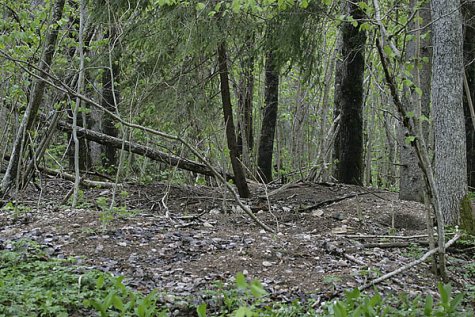Busy badgers
Photo: Arne Ader
Translation: Liis
Badger nests
Badger; Eurasian badger
Mäger Meles meles
Badgers haven’t settled down to winter sleep yet, movements and traces of their activities are visible in Saaremaa and the Alutaguse forests as well as south Estonia. They seldom move in daylight, so few forest roamers see them.
They have fattened up on animal and vegetable food, rooting in the soil for worms, grubs, snails, imagos that have burrowed down for wintering. They hunt for mice, small rodents and frogs that have crept underground for wintering too but badgers are rather clumsy hunters. They rather eat acorns, mushrooms, berries, grassy plants; a particular favourite are oats. The body weight has doubled in autumn and the fat layer can be four-five centimetres thick. A remarkable feat; the weight of a large adult animal is nearly one puud, in the old weight system - 16,18 kilos. Divide by two, and that will be the weight in spring.
When cold weather comes the badgers leave their nest (sett) less and less often. They fill the tunnels with dry leaves and soil, and fall in winter sleep when the cold is permanent. With warmer winter weather the burrows are aired and the badgers walk around a bit.
In the older part of the nest the clan head resides – an old male and his mate. There are also young females from several years and the young from this and the previous year. In late winter a new generation is born in the sett.









